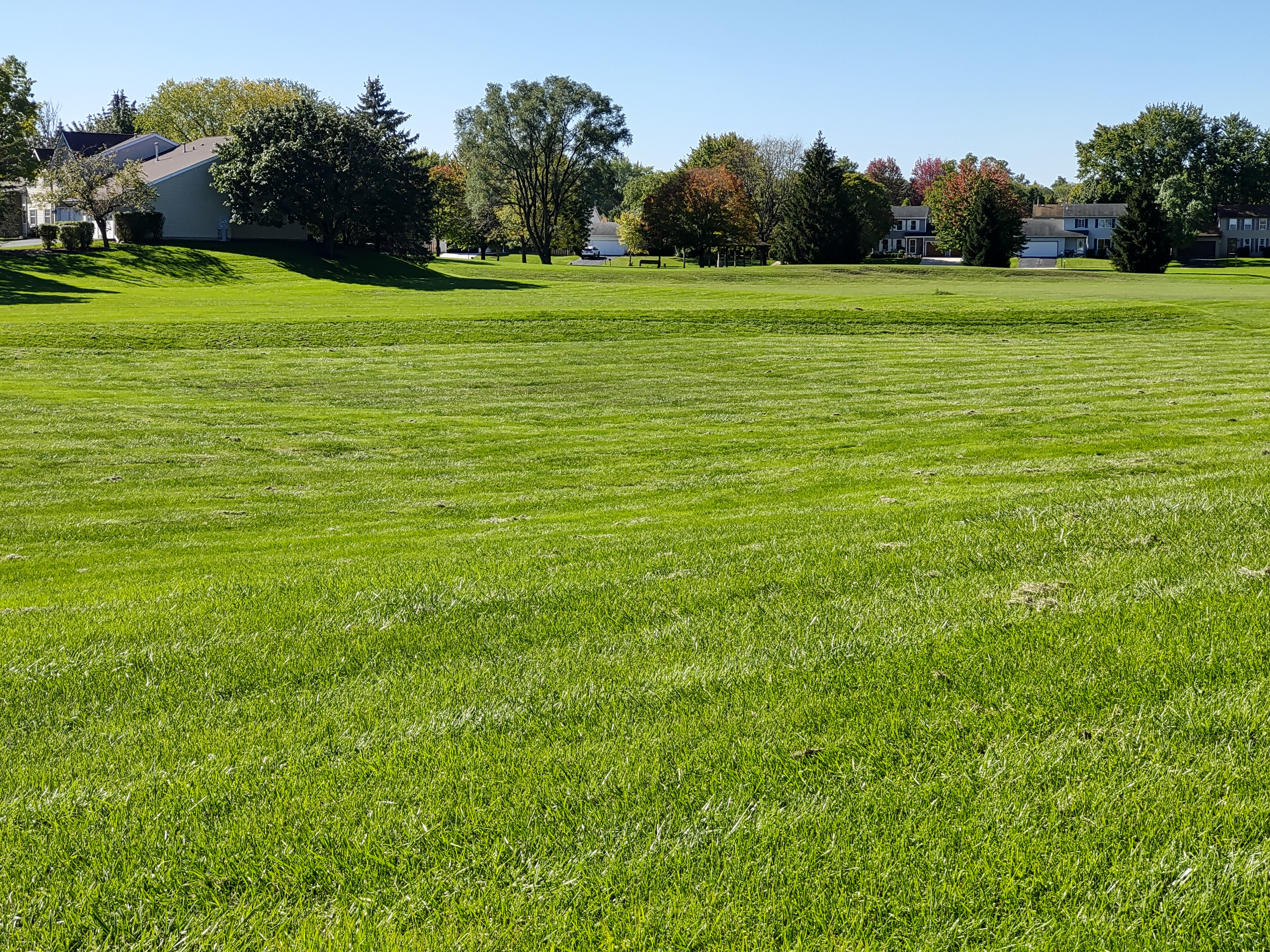“The Microsoft Surface Duo 2 addresses almost every qualm we had with the original. It's a quirky phone that's fun to use.”
- Marked camera upgrade over predecessor
- Large aspect ratio for reading and multitasking
- Software is largely fixed
- Top-tier flagship specifications
- Superior multitasking capabilities
- Poor lowlight camera performance
- Awkward to hold for camera use
- Still a few software bugs to work out
You only get one chance to make a first impression. But if your second impression is good enough, you can undo a lot of damage. A year ago. Microsoft tried to create a new class of mobile devices with the Surface Duo, which lives somewhere between a phone and a tablet. It’s built for multitasking pros who need to punch up a slide deck before a meeting or add some finishing touches to a contract before it’s sent off to the lawyers. To fit into this category, Microsoft created the Surface Duo — and it failed pretty spectacularly.
This year, Microsoft released the Microsoft
This is an update to my original review. The score has not changed, but I have added additional context to some sections after further testing. I have been using the Microsoft

Design and display
As with the first generation of the Microsoft Duo, this phone’s build is exquisite. You have two 1892 x 1344, 90Hz screens with up to 800 nits of brightness. They’re connected by a thin hinge, and on the hinge side, there’s a bit of curved glass. (we’ll talk about the significance of that in a bit). The polycarbonate ring running around the outside of the screens and the camera bump is the only knock we have on the design. It looks nice, but feels decidedly cheap. The occasional hair can get caught in the seam between the glass and the plastic, which is not a good look.
When you’re using this phone, people will notice it and ask you about it. Be prepared.
On the non-hinge side, you get a power button with a built-in fingerprint sensor and volume rocker. On the bottom, there’s a single USB-C port. The hinge itself is a 360-degree hinge that allows you to put the phone into many different positions such as Tent mode, Tablet mode, Laptop mode, and more. On the back, three camera sensors reside in a camera bump so large it could show up on some topographical maps. Subtle it is not.

The two screens are curved on the hinge side, which gives you what Microsoft calls the glance bar. The two curves form a notification window that can show you what notifications you have waiting, your battery level, and the time. I found this to be of limited use in my short time with the device. Personally, I’d much rather set the phone open on the table so I can see everything.
The large screen is both a blessing and a curse. The 4:3 aspect ratio gives you a lot of screen real estate when reading or scrolling. It’s rather refreshing when you’re reading in bed or doomscrolling the latest Twitter meltdown. But the size of the screens serves as a disadvantage when you want to do something one-handed or take a photo. Remember, in order to take a photo, you need to have the phone open, but not so open that the second screen blocks the camera module. I found the most comfortable way to take photos is to open the screen to 90 degrees and rest the bottom half on my palm while I aimed the camera. It’s not terribly convenient, but honestly, when you have a phone like this, compromises have to be made.
Some will criticize the hardware flaws like the fact that it’s awkward to use with one hand, it doesn’t fold flat, and it’s too expensive. All of those are valid criticisms except I just described the Samsung Galaxy Z Fold 3. The Microsoft Duo 2 shares those same flaws, but if they’re forgivable on one, I have to think they’re forgivable on the other.Overall, though, I’m happier with the design than I expected. This is a beautiful phone and Microsoft knows it. When you’re using this phone, people will notice it and ask you about it. Be prepared.
Software
Last year, Microsoft really dropped the ball in the software department. It has had an additional year to sort out bugs and peccadillos, and it’s safe to say that it shows, but there is still some work to do here. What’s important to remember when using this phone is to be as deliberate as possible when using gestures. Also, be aware that Microsoft has changed some of the gestures to make them fit what it wants to do.
Normally when you’re using an app in landscape on an Android phone, the gesture still comes up from the bottom. That’s not the case here. Microsoft had to change that to make the dual screens work. Any time you use an app with the phone in landscape, the swipe-up gesture for multitasking and returning to the home screen instead swipes in from the right side. It’s a weird, albeit necessary change, and tough to get used to.

As for bugs, despite the fact that I’ve only been using this phone for three days, I’ve already seen a few oddities that made me shake my head, including one instance where I got stuck on an empty home screen and had to restart the phone to get things back to normal. One constant irritation is the insistence of the software keyboard to cover up the text field where I’m typing in chat apps like Teams or Slack. This wouldn’t be too irritating except the most common place I found this behavior was in Teams, which is Microsoft’s own software and speaks to poor optimization or just plain oversight.
Software bugs are common in smartphones; most of us have just learned to overlook them. For example just this morning I opened up Outlook and went to read my email and I accidentally adjusted my phone a little bit too much so it rotated and when it rotated back it was on Gmail not on Outlook. Another time I opened up my Microsoft email inbox and clicked on a link to open a webpage, but when the link opened, it wasn’t the link I clicked on. The funny part is that one of those things happened on the Duo, and the other happened on my iPhone 13 Pro. These kinds of bugs happen more frequently on the Microsoft
Fortunately for the keyboard, it’s not bad. Microsoft uses its own Swiftkey keyboard, which is pretty accurate in terms of typing and autocorrect. I installed Gboard to play around with it as well. Gboard works just fine, and in fact, I rather enjoy typing with Gboard on the 4:3 aspect ratio, but when you open an app across windows, Gboard does not split, whereas Swiftkey does so automatically. Both keyboards work pretty well in Laptop mode, with the keyboard occupying the bottom screen while your text field occupies the top half. I was pleasantly surprised to see Gboard working as well as it did in this posture,

Microsoft has also built its apps to work well when spanning both screens. Outlook opens your message list on the left while your messages appear on the right. Microsoft also partnered up with a few third-party apps like Asphalt 9, Kindle, and TikTok so all of them use both screens — to varying degrees of success.
Microsoft also partnered up with a few third-party apps like Asphalt 9, Kindle, and TikTok so all of them use both screens — to varying degrees of success.
Microsoft has come a long way in terms of software, but it still has some ways to go. I shouldn’t have to reboot a phone in the first 48 hours because of some bug. Needless to say, this part of the phone will require a ton more testing before I’m satisfied with its overall performance.
Performance and battery
Speaking of performance, it should come as no surprise that this phone works quite well. The Snapdragon 888 and 8GB of

Battery life is not bad. My standard battery test involves GPS for 30 minutes at 75% brightness, streaming Netflix on Wi-Fi at the same brightness for 30 minutes, and playing Call of Duty mobile for 30 minutes at maximum brightness. After all that, the phone sat at 76%, which is the lowest of the phones I’ve tested with that methodology thus far, including the iPhone 13 Pro, which had 81%. I completed the rest of the day without charging and wound up at 20% at bedtime. All things considered, that’s not bad. I used both screens quite often during the day, and I was surprised it lasted as long as it did.
Camera
The camera sensors are a 12-megapixel wide-angle sensor with Optical Image Stabilization (OIS), a 12MP 2x telephoto sensor, and an ultrawide 16MP sensor with a 110-degree field of view. They are an improvement over the original
The cameras are definitely an improvement; but let’s be honest, a potato would be an improvement over the first-generation sensor. This camera module was built in-house by Microsoft. There are three cameras on the back and one front-facing. The set of cameras is fairly average in most respects, with some surprises in store. The term I would use is “social media good,” which is to say the photos you get here are usually going to be good enough for social media, but probably not much more than that.

In terms of software and performance, there are some issues here. The camera is often quite slow to snap photos. I found myself missing moments I wanted to capture, ending up with a dog’s back rather than his head. That was unfortunate. I also often found myself having to rotate photos I had taken because the camera was in the wrong orientation. That got annoying fast.
As for the camera itself, it performed admirably during the day. The color reproduction between the three sensors is very close to each other, and you won’t notice a significant color change. Portrait mode in particular seems quite good. It’s one of the best I’ve seen even when stacked against the iPhone 13 Pro. The camera is able to blur out the background without catching anything in the foreground save some wisps of hair. That was a pleasant surprise when it came to the camera.
Most cameras these days can do very well when the light is good. When the light is not good, that’s when a camera can shine, or in the case of the
On the video side, none of the cameras can shoot stable video despite optical image stabilization, which makes any kind of movement almost nausea-inducing. Shooting a video while walking is bouncy and jarring regardless of resolution or whatever software Microsoft has running under the hood. At night, all the cameras are pretty bad. That’s common, unfortunately, even the best cameras struggle mightily when shooting video at night.
Price and availability
The Microsoft
Our take
It’s a cliché to say this about a second-generation piece of hardware, but this is what the first-generation Duo should have been. But the reason it’s a cliché is that it’s so very often true. I put out my wish list for improvements from the Surface Duo to the
Then we come to the price. Microsoft is asking $1,500 for this phone, which is a lot, especially after dropping the ball with the first generation. But since Microsoft fixed most of what was wrong in the previous generation, it’s not hard to justify that price. This is a pretty good phone, in a mostly new form factor. It’s a pioneer in the Wild West, blazing a new path for mobile devices. That deserves a lot of credit.
A few years back when I worked for a startup, one of our philosophies was “If you have to give a score between one and ten, never choose seven. Seven is “too safe” a score. Instead, decide if it’s good enough to be an eight or bad enough to be a six.” Fast forward to today, and I’ve given the Microsoft
The Microsoft
Is there a better alternative?
Sure. The Samsung Galaxy Z Fold 3 is just $300 (about 20%) more than this phone and it has better software and a better set of cameras. One could argue the
How long will it last?
A smartphone is a hard piece of hardware to keep safe despite the standard one-year warranty. Most smartphones are glass sandwiches, but the Duo is a glass sandwich on top of a glass sandwich. Plus, it’s hard to find a good case for it. That’s enough to make anyone nervous. On the plus side, if a screen does break, it doesn’t fold, so it probably won’t be as costly to replace. But it’s fair to say there are some question marks here that I’ll only be able to answer after more time with the device.
Should I buy it?
Yes, you can buy this phone, but I’ll add a couple of caveats. First, this is not a phone for everyone; it’s not supposed to be a phone for everyone. This is a phone for someone who values productivity over creation. This is a phone for someone who either will carry a second phone with a good camera or someone who doesn’t really care about the camera. The person buying this phone doesn’t want an iPhone, or a Galaxy S series phone. They want something that’s unique and fun and they don’t mind paying a lot extra for it.



















